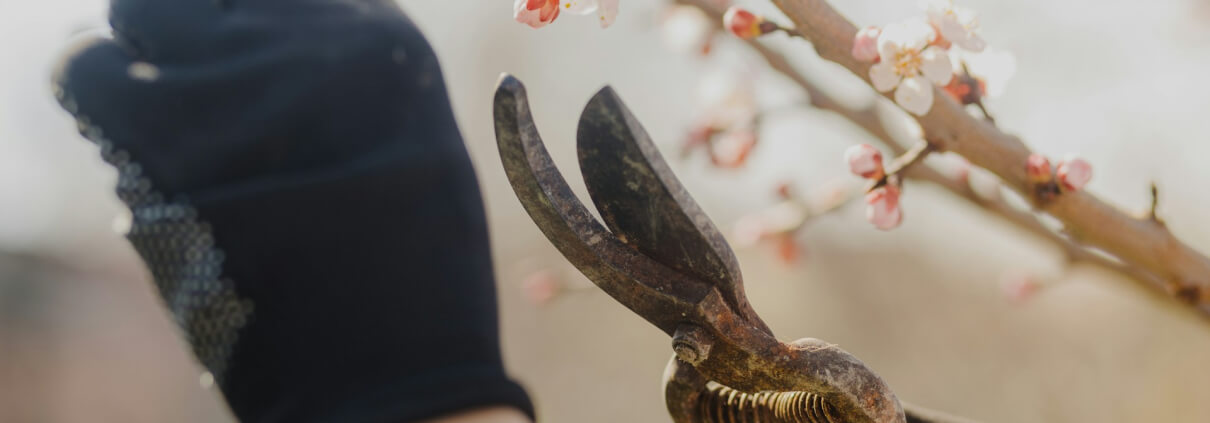Best Tools For Pruning Your Trees
Tree pruning plays a key role in maintaining the health and beauty of your garden. In Brisbane, where the climate can be quite diverse, understanding the right way to care for your trees is important for a thriving outdoor space. Pruning helps remove dead or diseased branches, allows more sunlight to reach the inner parts of the tree, and can even encourage better growth patterns. This process not only enhances the aesthetic appeal of your trees but also improves their overall health. As the climate in Brisbane impacts tree growth significantly, knowing which tools to use for specific tasks is essential.
We’ll explore the best tools for tree pruning in Brisbane. From small hand tools to larger equipment, using the right tools makes the pruning process more effective and ensures your trees remain in top condition. We’ll discuss various tools including pruning shears, loppers, and pruning saws, each serving a unique purpose in tree care.
Pruning Shears
Pruning shears, often referred to as secateurs, are essential for any gardener focusing on tree pruning. Designed for cutting smaller branches and precise trimming, these handheld tools are perfect for shaping and maintaining your trees. There are two main types of pruning shears: bypass and anvil.
– Bypass Shears: These are the most common type and work like scissors. They have two sharpened blades that pass each other to make a clean cut. They are ideal for live wood and offer precision cuts that promote healthy regrowth.
– Anvil Shears: These feature a single straight blade that closes onto a flat edge, or “anvil,” making them well-suited for dead wood. They provide more force but are often less precise than bypass shears.
Pruning shears are particularly useful for targeting specific branches without disturbing the rest of the tree. They’re easy to handle and are usually lightweight, making them suitable for anyone. Keeping them sharp and well-maintained ensures clean cuts which are crucial for the tree’s health. When selecting shears, it’s important to consider their comfort and grip, as well as the size of branches they need to cut.
Loppers
When dealing with larger branches that pruning shears can’t handle, loppers come into play. These long-handled tools provide extra leverage, making it easier to cut through branches that are beyond the reach of regular shears. Loppers are particularly handy for medium-sized branches, offering a great balance between capacity and precision.
There are two types of loppers to consider:
1. Bypass Loppers: Similar to bypass shears, they use two blades that pass each other for a clean cut. They’re great for live branches, ensuring minimal damage to the tree.
2. Anvil Loppers: Featuring a single blade that cuts against a flat surface, these are more powerful and better suited for dead wood. However, they might not offer the same precision as bypass loppers.
Loppers can handle branches that are generally up to 4 to 5 centimetres thick, making them incredibly versatile for many pruning tasks. Their extendable handles allow you to reach higher branches without needing a ladder, offering both safety and convenience. Choosing between bypass and anvil loppers depends largely on the type of wood you are cutting, as each is designed to tackle different pruning scenarios. Keeping these tools well-oiled and sharp will improve their efficiency and lifespan, ensuring you have a reliable partner in your gardening activities.
Pruning Saws
Pruning saws are indispensable when dealing with larger branches where shears and loppers fall short. These saws are designed to handle thick limbs, ensuring a cleaner cut without damaging the tree. Understanding the types of pruning saws available helps you choose the right one for your needs.
– Manual Pruning Saws: These are handheld and suitable for more intricate work or when power tools aren’t available. They’re perfect for precise control, especially on sensitive or awkward branches.
– Pole Saws: These are ideal for reaching high branches without the need for a ladder. Pole saws come in manual, electric, or petrol versions, offering versatility depending on the task size and location.
Pruning saws enable you to take on tasks that more delicate tools can’t manage, ensuring the health and structure of your trees. A sharp saw blade is crucial for making smooth cuts which reduce the risk of disease. Keeping a range of saw types on hand can cover any pruning challenges you might face.
Hedge Trimmers
Hedge trimmers are typically used to shape and maintain hedges and small trees, keeping your garden neat and uniform. Available in electric, petrol, and manual versions, they cater to different preferences and needs. Electric hedge trimmers suit smaller jobs and provide ease of use with less maintenance. Petrol trimmers, on the other hand, are more powerful and suitable for extensive or tough jobs, though they require regular maintenance. Manual versions give you the most control and precision for small detail work.
By selecting the right type of hedge trimmer, you can efficiently maintain the aesthetic appeal of your hedges and small trees, ensuring they remain a highlight of your garden landscape.
Safety Gear
Safety is paramount when it comes to any type of pruning. Using the right safety gear helps prevent injuries and ensures a smooth pruning process. Consider the following essentials:
– Gloves: Protect your hands from thorns and sharp branches.
– Goggles: Guard your eyes from flying debris.
– Helmets: Offer head protection, especially when working on high branches.
– Sturdy Footwear: Secure footing is crucial when using tools at different heights.
Maintaining safety involves more than gear; always stay alert and aware of your surroundings. Ensure your equipment is in proper working condition and use ladders or step stools correctly to prevent accidents. By prioritising safety, you maintain a safer environment for both you and your plants.
Keeping Your Tools in Top Condition
Maintaining your pruning tools is just as essential as using the right ones. Well-kept tools offer better performance and extend their lifespan. Here are some tips to keep your tools in top condition:
1. Cleaning: After each use, clean your tools to remove sap and soil that can cause rust or damage.
2. Oiling: Apply oil to metal parts to prevent rust and ensure smooth operation.
3. Storage: Keep tools in a dry, secure location to prevent environmental damage.
4. Regular Checks: Inspect tools regularly for wear and tear, replacing parts as needed to keep them functional.
By investing in proper maintenance, your tools remain reliable when you need them most. This proactive care means you can always rely on your equipment to perform well, allowing you to focus on the art of pruning.
Keep Your Garden Thriving
Having the right tools for tree pruning is a key element in maintaining a vibrant and healthy garden. By selecting and using these tools effectively, you can ensure your trees and greenery flourish. Investing in quality tools, and taking the time to maintain them, enhances their effectiveness and longevity.
Remember, well-pruned trees not only enhance the beauty of your outdoor space but also contribute to the health of your garden ecosystem. Whether you’re handling small nurturing tasks or dealing with large branches, each tool plays a part in your garden’s success. By understanding and implementing the best practices for tree care in Brisbane’s climate, your garden will remain a source of pride and enjoyment for years to come.
Looking to make your garden the envy of the neighbourhood? For expert help with tree pruning in Brisbane, trust TPS Tree Services to keep your trees in great shape and your outdoor space looking tidy year-round.




